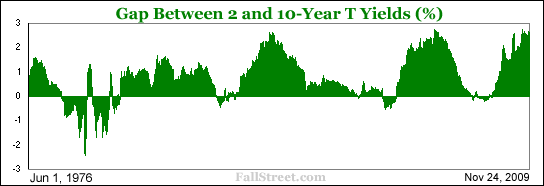The Financial Markets Liquidity Bubble Religion
Stock-Markets / Liquidity Bubble Nov 25, 2009 - 02:35 PM GMTBy: Brady_Willett
 The dreaded “L” word – liquidity – has once again become the word to explain every major movement in every major asset class. Don’t understand why equities are outpacing the fundamentals – liquidity! Can’t grasp why crude oil is up even though the demand outlook remains exceptionally weak – liquidity! Baffled by low or negative U.S. bond rates, the surging price of gold, and the booming Chinese real estate market - liquidity, liquidity, liquidity!
The dreaded “L” word – liquidity – has once again become the word to explain every major movement in every major asset class. Don’t understand why equities are outpacing the fundamentals – liquidity! Can’t grasp why crude oil is up even though the demand outlook remains exceptionally weak – liquidity! Baffled by low or negative U.S. bond rates, the surging price of gold, and the booming Chinese real estate market - liquidity, liquidity, liquidity!
While it easy to conclude that ‘excess liquidity’ has played a key role in pumping up many asset classes, it is nonetheless difficult to quantify exactly what liquidity is. To be sure, there is no strict definition of liquidity and models are either in their infancy or nonexistent1. On this front liquidity theories are somewhat faith driven; they neatly explain, without actually explaining, disconnects between the market fundamentals and market prices.
This is not to suggest that ‘liquidity’ – however you choose to define it – does not influence asset prices. On the contrary, given that there has historically been a distinct relationship between interest rates and borrowing, the same logic holds that there must be a liaison between interest rates and investing. After all, much of the ‘investing’ done in today’s world is done with borrowed money.
With this mind, one of the more traditional indicators of the availability of ‘liquidity’ is the yield curve. The general theory holds that when the curve is steep there is a greater incentive for borrowing/investing and when the curve is inverted borrowing/investing tend to slow down (an inverted yield curve almost always presages recession). One of the more popular talking points of the yield curve is the gap between the 2 and 10-year Treasury bond yields. This gap currently stands at 2.59 bps, or more than 3-times wider than the historical norm of the last 3-decades and near all-time highs. The basic idea here is that it currently pays very well to borrow short and go long.



Along with all of the liquidity speculations making the rounds, another related theme is the U.S. dollar carry trade. The story here that market participants are borrowing U.S. dollar’s at almost zero percent to buy other higher yielding assets. A similar carry trade was previously seen when investor’s borrowed Yen at near-zero interest rates, sold yen for dollars, and then purchased U.S. government bonds yielding considerably higher than 0%. However, where the Yen carry funneled capital primarily into the ‘safest’ and most liquidity market in the world in U.S. Treasury bonds, the dollar is reportedly being carried across numerous currencies and asset classes.
From Excessive Liquidity To Liquidation
Even as central banks adopted increasingly easy policies in 2008 nearly all asset classes declined. The lesson from this experience was that ‘liquidity’ has a formidable foe in asset price destruction, and that no amount of liquidity can create rising asset prices if those charged with investing capital elect not to invest.
In 2009 central banks have been wildly successful in enticing investors to take on more risk. And while many have already started to warn that this rush to risk across nearly all asset classes is cause for alarm, some are encouraged by the boom:
“We have been very fortunate that the stock markets moved back” and are “re-liquifying the whole process”. Alan Greenspan
The ‘re-liquifying’ process Mr. Greenspan refers to is that of rising stock prices creating a ‘wealth effect’. Needless to say, it is this ‘process’ - as it was pushed to the extreme - that helped produce the unsustainable booms and busts that dotted Greenspan’s Fed (and just for record, most investors do not consider themselves ‘fortunate’ for having participated in this ‘process’). As for current Fed boss, Ben Bernanke, he is of the mind that no “obvious” asset price bubbles can currently be identified. Not that he would know, of course, given that he has never actually pointed one out.
With the Fed pledging to keep interest rates low well into the future, it is not unthinkable that today’s liquidity and dollar carry investment platforms will continue to attract an even larger crowd of followers. However, while everyone believes they will be able to see the exit lights before the inevitable bust arrives, the unfortunate reality is that most will perish.
In short, liquidity explains why asset prices are booming today, and the death of the dollar carry trade will be the explanation given when asset prices go bust. What can not be explained is why anyone still has faith in the idea that the Fed can orchestrate sustainable asset price booms. Save a deflationary conflagration, easy money Fed policies always fuel unsustainable asset bubbles!
By Brady Willett
FallStreet.com
FallStreet.com was launched in January of 2000 with the mandate of providing an alternative opinion on the U.S. equity markets. In the context of an uncritical herd euphoria that characterizes the mainstream media, Fallstreet strives to provide investors with the information they need to make informed investment decisions. To that end, we provide a clearinghouse for bearish and value-oriented investment information, independent research, and an investment newsletter containing specific company selections.
© 2005-2022 http://www.MarketOracle.co.uk - The Market Oracle is a FREE Daily Financial Markets Analysis & Forecasting online publication.



